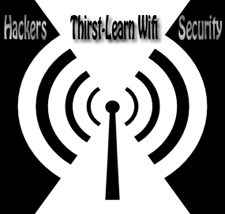
Author Name: Wamiq Ali
Main reason of hacking attempts is the fact, that the average internet user holds a belief that setting
up network security is a complex process, and hence chooses to ignore it altogether. However, as many experts have previously explained, protecting your computer and network from intrusion by hackers is quite an easy task to achieve. It is more or less a case of simple precautionary measures that can ensure your system from being compromised. Here are a few of such measures, that you can take to avoid being a target of a cyber attack :-
up network security is a complex process, and hence chooses to ignore it altogether. However, as many experts have previously explained, protecting your computer and network from intrusion by hackers is quite an easy task to achieve. It is more or less a case of simple precautionary measures that can ensure your system from being compromised. Here are a few of such measures, that you can take to avoid being a target of a cyber attack :-
- Operating system manufacturers often release updates to address security concerns in their existing operating systems. You should make it a habit to keep your particular operating system updated.
- Stay aware of the fact that many system hacks are due to user passwords that are easy to guess. So try to make all your passwords as a combination of symbols, numerals and letters which makes it difficult to guess.
- Stay aware of the fact that many system hacks are due to user passwords that are easy to guess. So try to make all your passwords as a combination of symbols, numerals and letters which makes it difficult to guess.
- You should use routers for any type of internet connection. Routers use a method known as Network Address Translation commonly abbreviated as NAT, which is functionally similar to a firewall. NAT prevents the ports from being scanned. Apart from that, the router adds to security by using external IP address while the computer utilizes an internal IP address.
- Use good spyware and virus scanners and keep them updated regularly. This should prevent latest viruses from affecting your system.
- Use WPA2 encryption technique if you are on a wi-fi network. It is better and comparatively more secure to the WEP encryption technique.
- A good practice if you are into using wireless networks, is to change the network’s Service Set Identifier also known as SSID and setting it to invisible. The SSID acts as a unique identifier for your wi-fi network and is broadcasted by your router. This allows other devices which are trying to connect your network, to see your SSID. You can navigate to your router’s security settings and from there, you can change the network SSID from a manufacturer preset one to the one you desire. Then, you can also make it invisible so that your network will not be discoverable and your router will not broadcast the SSID information.
- Open access wi-fi hotspots are networks which allow users to connect to them without a password. Open wi-fi networks seem to be lucrative options for accessing web content at places like airports. This is where it could actually become a potentially dangerous option as an intruder might connect to the same network and steal your sensitive information. One simple precaution that you can follow is to limit the content you access on such networks and avoid websites that require you to enter user-sensitive data.
The user has to be aware of the threats that surround him, if he wishes to combat them. On a conclusive note, you can really help the cause of protecting yourself from hackers if you follow simple rules and precautions as the ones outlined above.
http://www.hackersthirst.com/2011/12/protect-your-computer-network-and-wi-fi.html

No comments:
Post a Comment